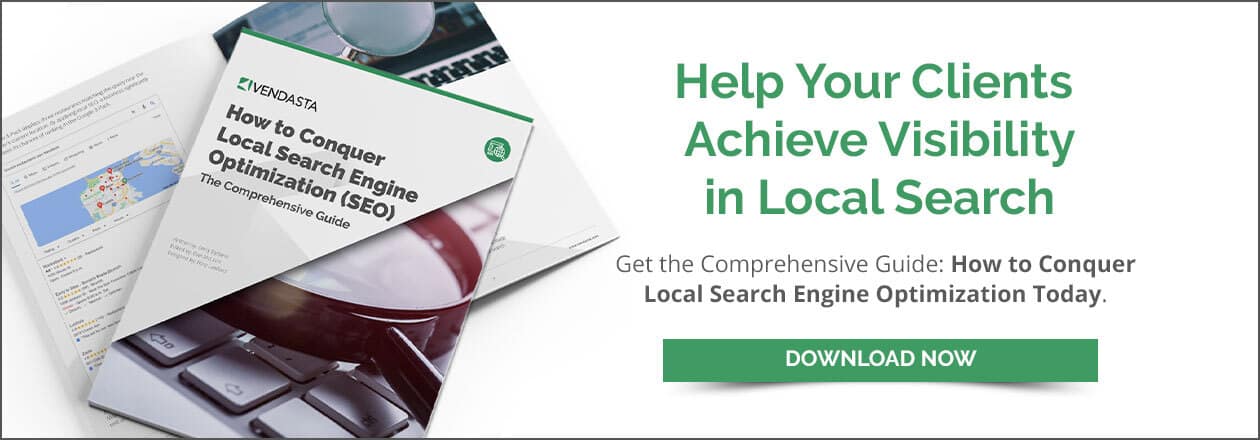SEO reporting: 7 insights your clients expect
SEO reporting is an investment in client relationships. A business that produces regular reports can explain the impact of the activities and set out a clear plan that follows clients’ SEO goals. The high value of a consistently regular, quality SEO report will provide a strong base for relationship building and be key in client retention down the road.
Rocket-power blog post SEO with easy-to-implement strategies. Download the Blog SEO Checklist right now and make a bigger impact for your clients.
Like anything, to deliver consistent results there has to be a process in place that provides a roadmap. This process informs a strong digital marketing strategy and helps to decipher what efforts are making the biggest impact and what areas need improvement. Not to mention, it helps service providers get it right every time for every client.
7 SEO reporting insights clients expect
- Organic traffic
- Conversion rate and goal progress
- Top performing pages
- Page speed insights
- Bounce rate and time on page
- Keyword rankings
- Backlink profile
Keep reading for details.
Essential SEO reporting insights clients expect
Not all reporting insights are created equal, and every client is different, so it’s essential to hit all the points but tailor your presentation of the metrics to each client. These insights are also key to local SEO reporting but that is more geographically focused in comparison. The following insights are generally the most important to keep in mind and communicate to clients.
1. Organic traffic
Arguably the most important metric to measure for SEO, monitoring organic traffic will assist in deciphering how your SEO tactics are working.
Help clients understand the source of their organic traffic. Once the sources are highlighted, this makes it easier to focus efforts and spend time and money more efficiently and effectively. This part of the report tells a client which of their pages is receiving the most traffic. If you’re using a tool like Google Analytics or Matomo, it will display metrics for users, new users, and sessions that describe the time spent on a particular web page.
2. Conversion rate and goal progress
Understand what site visitors are looking for on your client’s site so they are more likely to convert. The insights about which pages are driving the most and least conversions should be highlighted in the report along with reasoning to back up the hypothesis. Conversion rate is a top priority for clients, so this should be at the top of the report along with organic traffic.
Conversion rate can be demonstrated by choosing specific goals your client would like to track as conversions. Tracking goal completions in your SEO tool of choice for a specific page will automatically calculate the customer conversion rate.
Long gone are the days of only promising clients that you will rank them for 5-10 keywords. Clients have become more sophisticated in their understanding of SEO and its value. The ultimate goal of any agency should be delivering on the client’s most important objective, which often is growing the bottom line. As SEO experts, the best way we can do this is by providing client with more leads and conversions. Proving out these metrics to the clients is how you win the trust and longevity of any client.
3. Top performing pages
Checking page traffic gives the client an idea of what content is working for their customers. This gives clients a chance to optimize the lower-performing pages with a template to work from of their higher-performing pages. An overview of top-performing pages in SEO reporting will show trends over time of what visitors are clicking.
4. Page speed insights
The probability of customers bouncing from a web page increases 32 percent as page load time goes from one second to three seconds (ThinkWithGoogle). Page loading speed matters, and it can be easily affected. It doesn’t take much to bog down loading time: image or video files that are too large, website host, and page type are just a few causes.
5. Bounce rate and time on page
Your clients need to know how long customers are staying on their page. If visitors are landing and then leaving right away, that tells a story. It’s generally good to avoid high bounce rates. If people are staying on a page, that means the information is relevant to what they were searching for.
Focus on creating pages with a large amount of content rather than landing pages that have a bunch of other links to help visitors navigate through to the content they actually came to the site to see.
6. Keyword rankings
Rankings should include keywords and positioning on search engine results pages (SERPs). Keyword rankings should be monitored weekly as a tool to determine what might be the root cause of any changes in traffic as this could have to do with search volume.
The average keyword ranking position over time will show a historical trend line of keyword rankings that will paint a larger picture for clients. Comparing month-to-month trends will show any dips in traffic and keyword ranking.
Comparing the same month year over year in SEO reporting will give the client a more accurate picture of what they can expect. This could look like lulls in traffic through the holiday season or in the summer and increases in months that are big in their industry.
7. Backlink profile
The most important part of building a backlink profile is the quality of the links. Include a spreadsheet of all links built in the SEO report so that you can show the client which sites are linked to theirs. When you build backlinks for clients, the best way to prove the quality of links is with domain authority (DA). Use a tool like Ahrefs to determine the DA of sites before going through the link-building process.
Anatomy of the perfect SEO report
Before doing any work on a client’s SEO, ensure goals and key performance indicators (KPIs) are determined. This will tell you exactly what your client is looking to achieve and what metrics and activities are most important to them. The KPI discussion will help you steer clients in the right direction and adjust their expectations because SEO doesn’t happen overnight.
Keeping the above insights in mind, you can build the perfect SEO report around them. This would include sections about activities accomplished, overall progress on goals, and what you’ll do next.
Activities accomplished
This includes everything SEO related that you have done for your client since the last check-in. This is a laundry list of activities completed and ongoing, because let’s face it, SEO is always ongoing.
The most important part of activities accomplished is explaining their impact. What have these activities done to improve your client’s SEO? If you can’t explain how an activity has contributed to moving a page up in search results then perhaps it doesn’t hold as much value as other activities.
Overall progress on goals
This can also be a laundry list of items, but it’s key to highlight the most important metrics here and not overwhelm clients with too much information. The top metrics might differ depending on what that client’s biggest pain points are or what they hired you to do for them. Know your client’s goals and what’s most important to them in order to keep them happy.
What’s next
This section will cover what the client is looking for at the end of your report. It is the plan moving forward from the current state of their SEO journey and gives actionable points for them to either move on themselves or for you to communicate to them and move forward.
What to do if analytics in your SEO reporting show drops
First, monitoring SEO metrics and reporting back to clients will alert you to successes as well as occasional drops. Make sure to look at the big picture when determining what might be the cause of a traffic decline. Drops can be due to a number of factors including algorithm changes. Be aware of when search engines are updating their algorithm so that you can be prepared to include that information in the report.
Check the SERPs to see where you rank next to the competition. It’s also key to identify traffic sources and identify what type of traffic is taking the dive. Take a step back and look at traffic over long periods of time. If it’s a small dip that has a pattern over the month of July, you could reason that perhaps more people are unplugged at that time.
Reminder that Matomo and Google Analytics have tools to help determine the offender behind the drop in traffic.
Do’s and don’t’s of SEO reporting
To sum up this post with a list:
Do:
- Determine a cadence of comprehensive SEO reporting with your client, whether that’s bi-weekly, monthly, quarterly, etc., as this will set expectations and prevent clients from asking for information day and night.
- Methodically prepare reports so that your client can see progress from one report to the next.
- Customize reports and SEO reporting metrics for individual clients.
- Hit the key points and be prepared to explain what is causing changes good or bad.
Don’t:
- Data dump on clients. This is overwhelming, and they will look for a different provider that can give them an executive summary of the report.
- Assume your client is well-versed in SEO. The vast majority of clients will not be SEO experts.
- Set unrealistic goals and KPIs, this will lead to unrealistic expectations and disappointed clients.
- Ignore negative trends, these are just as important to pay attention to as positive trends.
Always establish expectations and boundaries with clients to keep both parties happy with SEO reporting insights.



